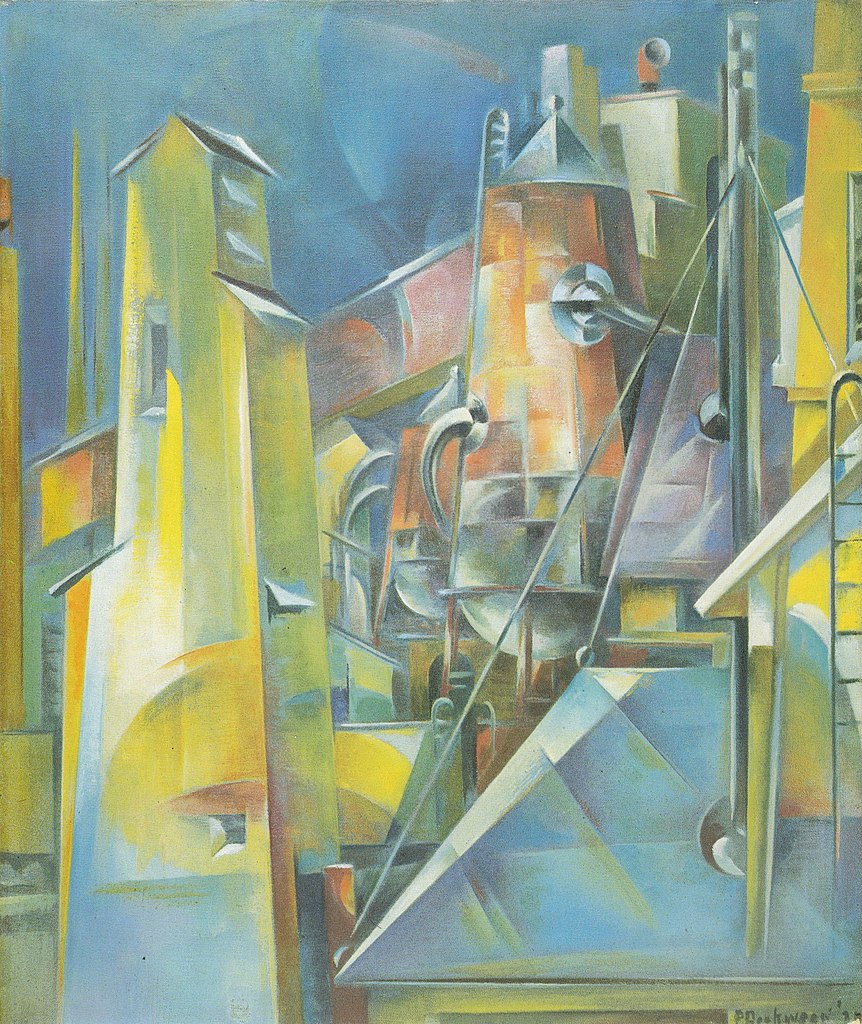General
Reshaping Vision: Factory by Preston Dickinson and Industrial Aesthetics

In the realm of early 20th-century American art, Preston Dickinson stands out as a figure whose work captures the essence of an era marked by industrial growth and technological advancement. His painting, “Factory,” serves as a profound commentary on the industrial landscape, blending elements of realism and abstraction to offer a unique perspective on the aesthetics of industry. This article delves into Dickinson’s artistic approach, exploring how “Factory” reshapes our vision of industrial aesthetics and contributes to our understanding of this transformative period.
The Industrial Muse
Preston Dickinson’s fascination with industrial themes is not merely an artistic preference but a reflection of the broader societal shift towards modernization and mechanization. “Factory,” with its intricate depiction of a manufacturing plant, embodies the complexity and dynamism of the industrial age. Dickinson’s choice of subject matter invites viewers to reconsider the beauty found in the mechanical and the manufactured, challenging traditional notions of aesthetic value.
The painting’s composition, characterized by bold lines and geometric forms, mirrors the structural elements of the factory it represents. Dickinson employs a palette that captures the starkness and monotony of industrial settings, yet manages to infuse it with a sense of vibrancy and life. This juxtaposition highlights the artist’s ability to find harmony in what many might see as discordant or unappealing, presenting the industrial landscape as a source of inspiration rather than desolation.
A New Aesthetic Language
Dickinson’s work is significant not only for its subject matter but also for its contribution to developing a new aesthetic language that incorporates industrial elements. “Factory” exemplifies how industrial aesthetics can be embraced and transformed into art, suggesting a reevaluation of what constitutes beauty in the modern world. Through his innovative use of form and color, Dickinson challenges viewers to see the industrial environment through an artistic lens, offering a fresh perspective on familiar scenes.
The influence of industrial aesthetics on Dickinson’s art extends beyond the visual; it also reflects a deeper engagement with themes of progress, labor, and the human relationship with technology. “Factory” invites contemplation on the impact of industrialization on society and the natural landscape, encouraging a nuanced understanding of progress and its consequences.
Legacy and Influence
Preston Dickinson’s “Factory” is more than a snapshot of a bygone era; it is a testament to the enduring power of art to capture and interpret the world around us. By integrating industrial motifs into his work, Dickinson paved the way for future artists to explore similar themes, contributing to a broader dialogue about the role of art in society and the ways in which it can reflect and shape our understanding of the world.
The painting’s lasting appeal lies in its ability to transcend its specific historical context, offering insights into the universal human experience of adapting to and finding beauty in change. As we continue to navigate the challenges and opportunities of technological advancement, “Factory” remains a poignant reminder of the importance of embracing new perspectives and redefining our aesthetic values.
In exploring the intersection of art and industry, Preston Dickinson’s “Factory” offers a compelling vision of how the industrial landscape can be reimagined and celebrated through the lens of art. It invites us to consider the ways in which art can inform our understanding of progress and inspire us to see the beauty in the most unexpected places.
For those interested in exploring more about how artists have captured the essence of their times through their work, visiting an art gallery can provide invaluable insights into the diverse ways in which art reflects and influences our perception of the world.





















